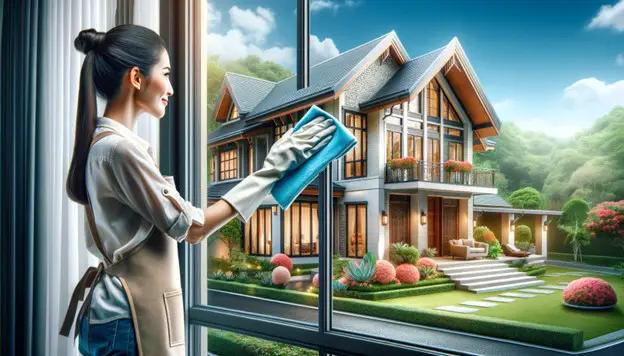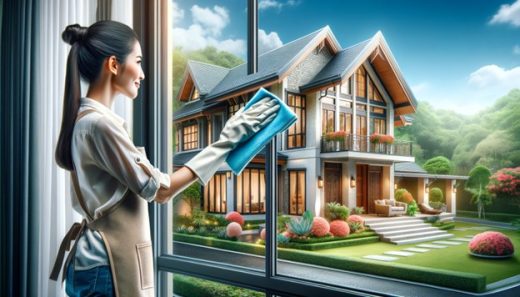How to maintain residential architecture beauty guide, Real estate decor, Home design style
What Are the Best Practices for Maintaining the Beauty of Residential Architecture?
May 4, 2024
Over the years, I’ve learned a thing or two about what works (and what doesn’t) when it comes to maintaining the beauty of a home. And today, I want to share some of those key best practices with you. Whether you’re a new homeowner just starting out or a seasoned pro looking for some fresh ideas, I hope you’ll find these tips helpful and inspiring.
So grab a cup of coffee, settle in, and let’s dive into the world of residential architecture maintenance together. Trust me – your home (and your neighbors) will thank you!
1. Select Durable, Low-Maintenance Materials
Material selection is critical for achieving lasting architectural beauty. Durable, low-maintenance options reduce the need for repairs and help maintain a pristine appearance with minimal effort. Some top choices include:
- Brick: Extremely durable, fire-resistant, and low-maintenance; can last over a century with minimal upkeep
- Stone: Natural material with timeless beauty; highly durable and resistant to weather, insects, and fire
- Fiber cement siding: Long-lasting engineered material that won’t rot, warp, or delaminate; holds paint well
- Metal roofing: Durable, lightweight, fire-resistant, and energy-efficient; can last 40-70 years
- High-quality wood: Attractive and versatile; opt for rot-resistant species and protective finishes
2. Follow Timeless Design Principles
Adherence to established architectural design principles helps create enduring aesthetic appeal. Some key principles to follow include:
- Proportion and scale: Design elements sized appropriately in relation to each other and the human body
- Rhythm: Repeating patterns of lines, shapes, forms, colors, and textures for visual interest
- Harmony and unity: Consistent, complementary design throughout the interior and exterior
- Balance: Even distribution of visual weight; can be symmetrical or asymmetrical
- Emphasis: Focal points that draw the eye, like a grand entrance or picture window
3. Implement a Regular Maintenance Schedule
Consistent upkeep is essential for preventing deterioration that can mar a home’s appearance. Implement a regular maintenance schedule that includes:
- Annual inspections of the roof, siding, foundation, windows, and doors to spot issues early
- Prompt repairs of any damage from weather, pests, normal wear and tear, or age
- Routine cleaning of exterior surfaces like siding, decks, patios, and walkways
- Regular repainting or resealing of wood elements every 3-7 years, or as needed
- Seasonal landscaping tasks like pruning, mulching, and updating plantings
Of course, maintaining the interior is just as important as the exterior. For eco-conscious homeowners in the Seattle area, green cleaning services like Seattle Green Cleaning Fairy can help keep the inside of the home looking beautiful while minimizing environmental impact.
4. Embrace Patina and Age
Some natural materials develop a beautiful patina over time. Rather than fighting this aging process, work with it for a sense of character and timelessness. Examples include:
- Copper roofs and gutters that develop a protective blue-green verdigris
- Natural wood shingles that weather to a soft gray
- Brick and stone that gently erode and develop unique colorations
- Concrete and stucco that mellow and streak subtly with age
5. Update Sensitively
When renovations are needed, avoid tacking on trendy features that will quickly look dated. Instead, select timeless updates that complement the original style. Some strategies:
- Preserve original architectural details and materials when possible
- Match the scale and proportion of additions to the existing structure
- Choose fixtures and finishes that suit the home’s architectural style
- Opt for classic colors and patterns rather than flashy trends
- Incorporate modern comforts and efficiencies without sacrificing character
6. Landscape Thoughtfully
Well-designed landscaping enhances architectural beauty and curb appeal. Maintain it with:
- Pruning trees and shrubs to complement rather than hide the architecture
- Keeping beds and borders neatly edged and mulched
- Filling bare spots in the lawn and addressing any disease or pest issues
- Updating plantings periodically for a manicured, inviting look
- Maintaining hardscaping like driveways, walkways, patios, and retaining walls
7. Consult Professionals
Attempting major repairs or renovations without proper knowledge and skills can result in damage that detracts from a home’s appearance and value. For complex projects, consult experienced professionals like:
- Licensed architects well-versed in the home’s style and historic details
- Structural engineers to ensure renovations are sound
- Skilled contractors specializing in the materials and techniques required
- Trained craftspeople to repair or reproduce original architectural elements
- Landscape architects to optimize outdoor spaces
By implementing these best practices, homeowners can maintain the beauty of residential architecture for generations. From selecting quality materials and classic designs to staying on top of maintenance and making sensitive updates, a comprehensive approach is key. With care and attention to detail, homes can age gracefully, preserving both their aesthetic appeal and resale value over time.
Comments on this guide to How to maintain residential architecture beauty article are welcome.
American Architecture Designs
American Architectural Designs – recent selection from e-architect:
House Design
Residential Architecture
Comments / photos for the How to maintain residential architecture beauty page welcome.






